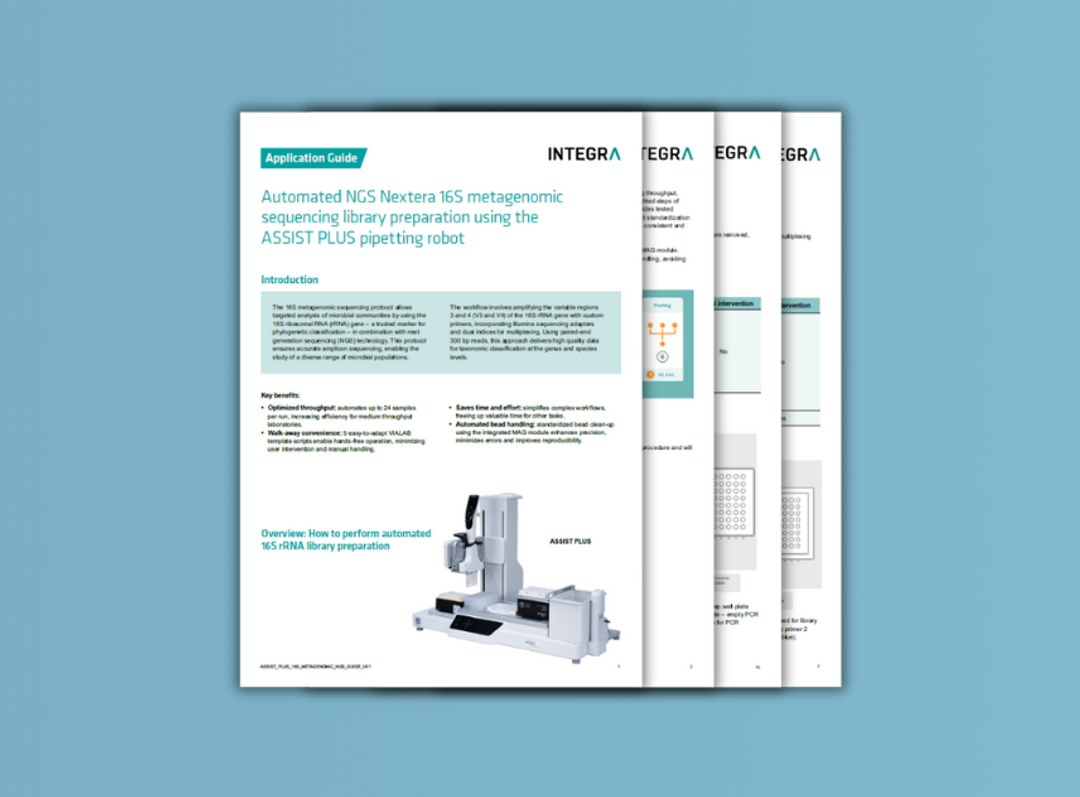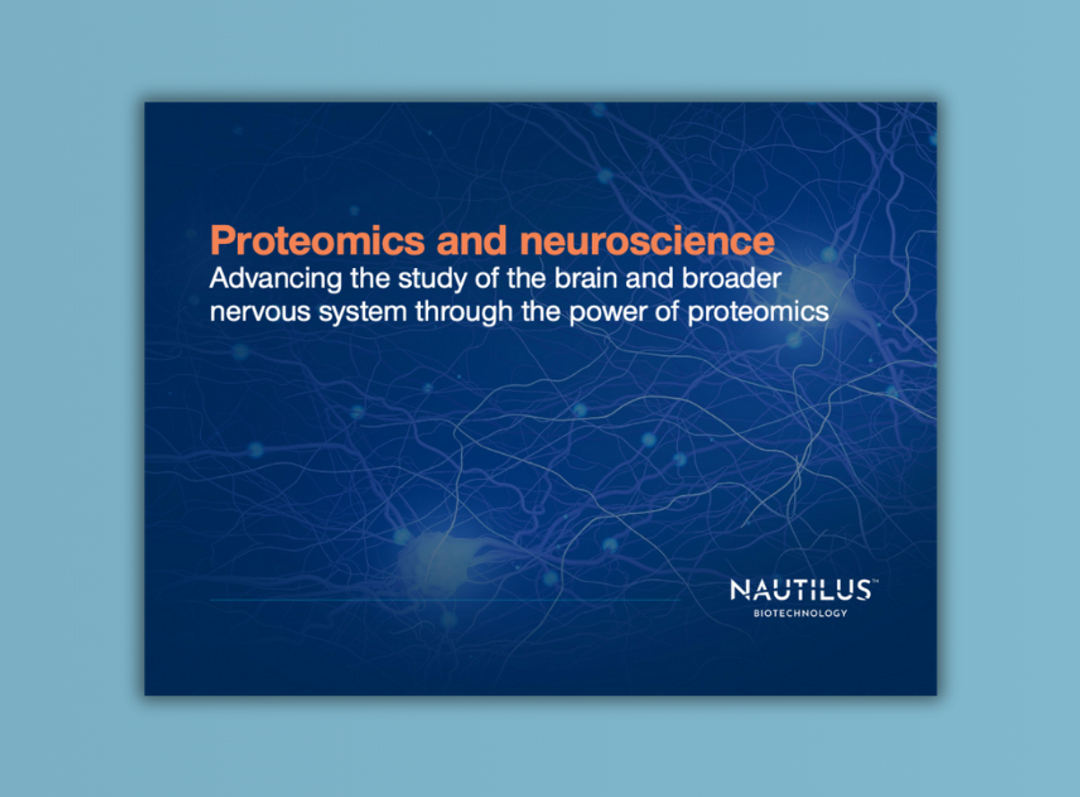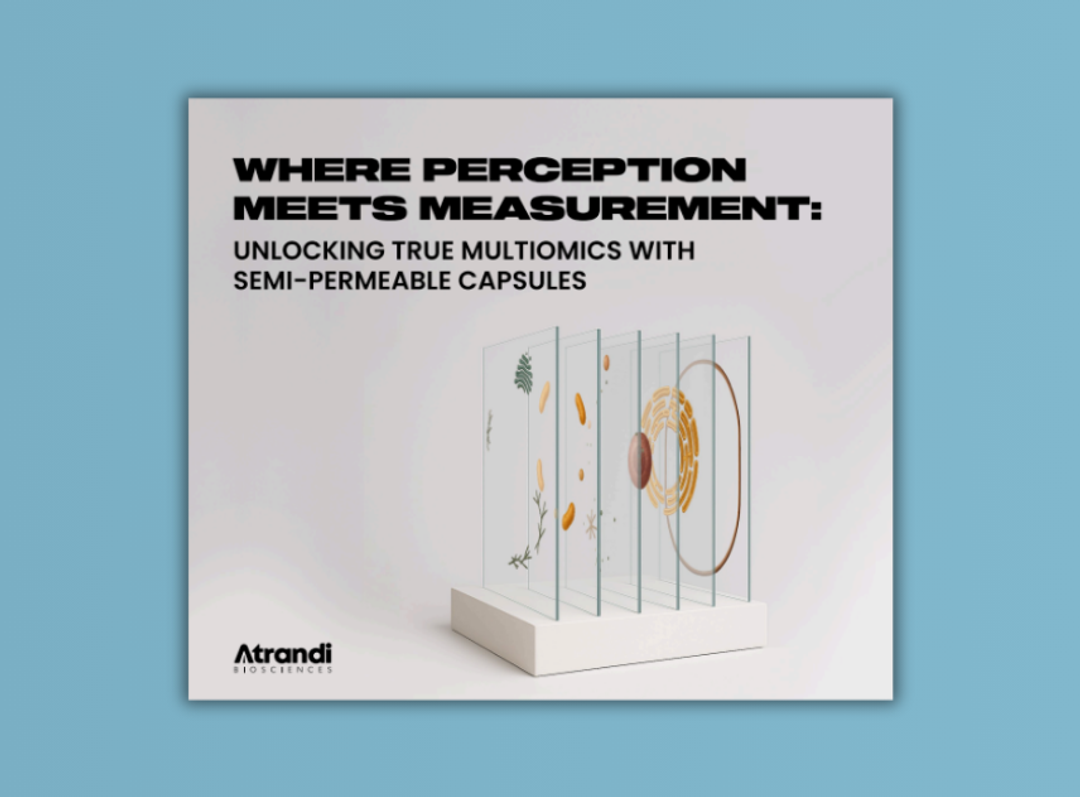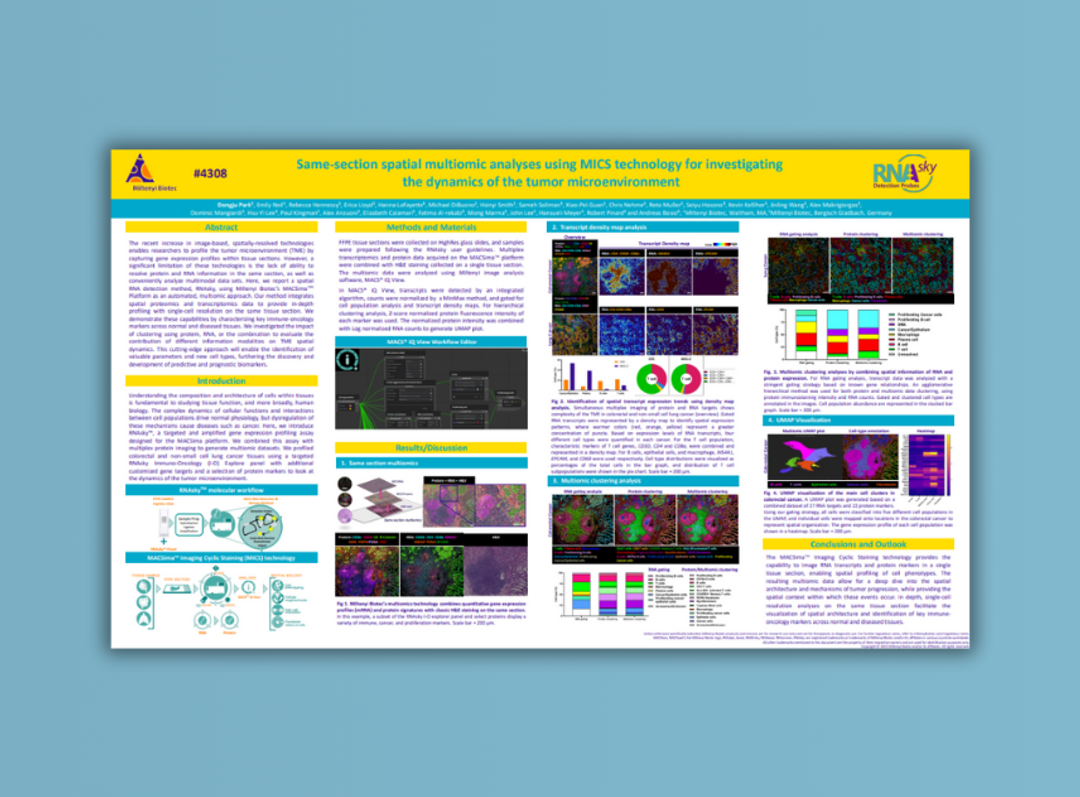
The power of multiomics in transforming biomedical research
Keep up with the latest advances and innovations shaping the field of multiomics
From decoding brain function through proteomics to mapping tumors in 3D, multiomics is revolutionizing our understanding of biology. By integrating genomics, proteomics, and spatial analysis, researchers can now observe cellular systems in their full complexity, uncovering the hidden networks that drive health and disease. In this feature, we spotlight the tools and breakthroughs fueling this transformation, from next-generation sequencing for rare diseases to same-section spatial multiomics and capsule technologies that reveal entirely new layers of biological insight. Together, these advances are shaping a new era of precision medicine.

Discover how the ASSIST PLUS pipetting robot can take the hassle out of 16S metagenomic library preparation. Using INTEGRA’s ready-to-run VIALAB scripts and MAG module, researchers can automate key PCR and clean-up steps for up to 24 samples at a time. The result is a faster, more reliable workflow that reduces hands-on time, improves consistency, and helps generate high-quality sequencing data with ease.
Download resource
Explore insights from leading studies in neuroscience, including multiomic analyses, that show how protein networks influence neurological function and disease. Take a closer look at Nautilus’ recent preprint on tau proteoforms in Alzheimer’s disease, highlighting how next-generation proteome analysis is helping to uncover entirely new molecular insights into the brain.
Download resource
Learn how Inotiv’s quantitative proteomics services are advancing drug discovery by providing deeper insights into disease models and therapeutic effects. Dr. Matt Westfall explains how targeted and global proteomics approaches allow researchers to quantify protein levels, uncover novel biology, and guide the selection of the most relevant in vitro and in vivo models.
Read article
Atrandi Biosciences is transforming single-cell research with its Semi-Permeable Capsule (SPC) technology. SPCs isolate individual cells in permeable compartments, enabling high-throughput, multi-step workflows. By capturing DNA and RNA from the same cell, SPCs make true multiomics scalable, linking genotype to cellular state for deeper biological insights.
Download resource
Dr. Katherine Bridge, a Kay Kendall Leukaemia Fund Intermediate Research Fellow at the University of York, is using Aptamer Group’s binders to explore the role of HIF transcription factors in blood cancer. In this article, she explains how aptamers could unlock new opportunities for more targeted and effective cancer treatments.
Read article
The MACSima™ Imaging Cyclic Staining technology provides the capability to image RNA transcripts and protein markers in a single tissue section, enabling in-depth, single-cell resolution analyses of spatial architecture and identification of key immuno-oncology markers. Download this poster to learn more.
Download resource
Dr. Michael Kiebish of BPGbio explains how the company’s AI-powered NAi Interrogative Biology Platform integrates genomics, proteomics, metabolomics, and more with Bayesian causal AI to uncover novel, patient-focused drug targets. Unlike traditional methods, the platform emphasizes causation over correlation, enhancing predictions of clinical outcomes and trial success.
Read article
In this guest editorial, Neil Ward, VP of PacBio EMEA, explores how advanced long-read and multiomic sequencing technologies are revealing complex genetic variants missed by traditional methods. These innovations promise to end the years-long diagnostic odyssey faced by patients and families, enabling faster, more accurate answers and greater efficiency for clinical laboratories.
Read article
Jeremy Lambert, Director of Product Management at Stellaromics, reveals how the company’s groundbreaking Pyxa™ platform is redefining spatial biology. As the first system to deliver true, high-resolution 3D spatial transcriptomics in intact thick tissue, Pyxa enables scientists to visualize gene expression and molecular interactions in their native 3D context.
Read article
In this guest editorial, Kelly Hines, University of Georgia, and Daniel DeBord, MOBILion Systems, introduce a transformative approach: ion mobility–mass spectrometry (IM‑MS). This technology promises to collapse barriers between molecular classes, accelerate discovery, and provide an unprecedented window into the chemical networks that sustain life.
Read article